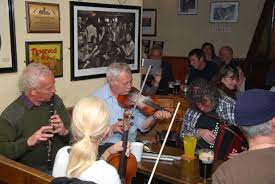When it comes to music, I have always been drawn to the sounds and melodies that evoke a strong sense of history and culture. So, when I stumbled upon the folk music traditions of Eastern Europe, I couldn’t help but dive headfirst into this rich and enchanting world. What I found was a treasure trove of musical traditions that not only reflected the unique heritage of each country but also showcased the shared threads that connected them all.

One of the first things that struck me about Eastern European folk music was its distinctiveness. Each country had its own unique style, rhythm, and instruments that gave their music a captivating flavor. From the hauntingly beautiful melodies of Romania to the lively and energetic dance tunes of Ukraine, each country’s folk music told a story that was deeply rooted in its cultural history.
One of the most fascinating aspects of exploring these traditions was tracing the origins and influences of the music. In Eastern Europe, folk music is often seen as a living, breathing art form that has evolved over centuries. It is an art form that has been shaped by a myriad of influences, ranging from ancient Slavic traditions to the cultural interactions with neighboring regions. It was like delving into a musical time capsule, where the echoes of past generations and cross-cultural exchanges could still be heard in the tunes that were being played today.
But what truly brought the music to life for me was the connection between the musicians and the communities they played for. Eastern European folk music is deeply embedded in the social fabric of these countries. It is not just something to be performed on a stage, but rather a communal experience where everyone is invited to participate. Whether it is a lively celebration or a mournful lament, these songs have the power to bring people together, to evoke emotions, and to create a sense of unity.
In my quest to uncover the hidden gems of Eastern European folk music, I discovered a multitude of traditional instruments that fascinated me. From the Romanian pan flute to the Ukrainian bandura, these instruments added a unique timbre and texture to the music. I found myself captivated by the haunting sound of the Bulgarian kaval and mesmerized by the rhythmic beats of the Croatian tamburica. Each instrument had its own story to tell, and it was a joy to explore the intricacies of their construction and learn how they were played.
As I delved deeper into the music, I was also struck by the storytelling element that is inherent in Eastern European folk songs. These songs are not just melodies; they are narratives that capture the joys, sorrows, and dreams of the people. They are windows into a world that is both familiar and foreign, where mythical creatures roam and heroes embark on epic quests. It was through these stories that I truly began to understand the collective consciousness and the shared experiences of the people who have carried these traditions for generations.
My journey into the world of Eastern European folk music has been nothing short of transformative. It has opened my eyes to a musical landscape that is as diverse as it is enchanting. It has given me a deeper appreciation for the power of music to transcend boundaries and connect people across time and space. And most importantly, it has instilled in me a lifelong curiosity to continue exploring the untold stories and hidden treasures of the folk music traditions of Eastern Europe.










